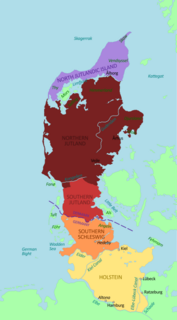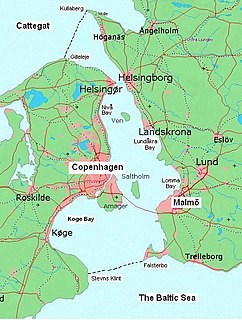
Øresund or Öresund, commonly known in English as the Sound, is a strait which forms the Danish–Swedish border, separating Zealand (Denmark) from Scania (Sweden). The strait has a length of 118 kilometres (73 mi) and the width varies from 4 kilometres (2.5 mi) to 28 kilometres (17 mi). It is 4 kilometres (2.5 mi) wide at its narrowest point between Helsingør in Denmark and Helsingborg in Sweden.

The Skagerrak is a strait running between the southeast coast of Norway, the southwest coast of Sweden, and the Jutland peninsula of Denmark, connecting the North Sea and the Kattegat sea area, which leads to the Baltic Sea.
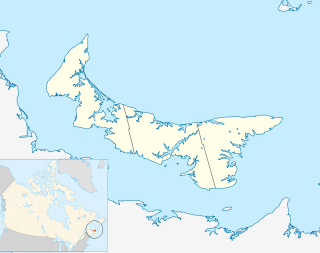
The Confederation Bridge spans the Abegweit Passage of Northumberland Strait. It links Prince Edward Island with mainland New Brunswick, Canada. Before its official naming, Prince Edward Islanders often referred to the bridge as the "Fixed Link". Construction took place from October 1993 to May 1997 and cost C$1.3 billion. The 12.9-kilometre (8 mi) bridge opened on May 31, 1997.

The South London line is an Inner London part of the London Overground rail network. The line is run together with the East London line to provide direct services between Clapham Junction and Highbury & Islington. It consists of eight stations, one of which marks the crossover into the East London line network and runs 8.5 miles (13.7 km). Most of the line is on high viaduct over other transport infrastructure. Interchanges with the London Underground are at Clapham High Street and the closest on its London Overground extension is Canada Water. The line is in Travelcard Zone 2.

The Eurasian Land Bridge, sometimes called the New Silk Road, or Belt and Road Initiative is the rail transport route for moving freight and passengers overland between Pacific seaports in the Russian Far East and China and seaports in Europe. The route, a transcontinental railroad and rail land bridge, currently comprises the Trans-Siberian Railway, which runs through Russia and is sometimes called the Northern East-West Corridor, and the New Eurasian Land Bridge or Second Eurasian Continental Bridge, running through China and Kazakhstan. As of November 2007, about 1% of the $600 billion in goods shipped from Asia to Europe each year were delivered by inland transport routes.
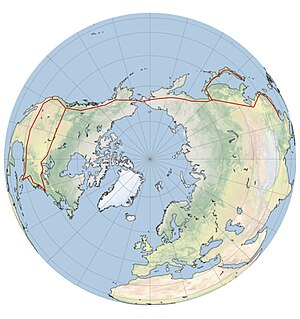
A Bering Strait crossing is a hypothetical bridge and/or tunnel spanning the relatively narrow and shallow Bering Strait between the Chukotka Peninsula in Russia and the Seward Peninsula in the U.S. state of Alaska. The bridge/tunnel would provide a connection linking North America and Eurasia.

Mangere Bridge, officially also called the Manukau Harbour Crossing, is a dual motorway bridge over the Manukau Harbour in south-western Auckland, New Zealand, crossing between the suburb also known as Mangere Bridge and the suburb of Onehunga.

The Fehmarn Belt Fixed Link is a planned immersed tunnel that is proposed to connect the Danish island of Lolland with the German island of Fehmarn. This would cross over the Fehmarn Belt in the Baltic Sea – 18 km (11 mi) wide – hence providing a direct link by railway and highway between northern Germany and Lolland, thence to the Danish island of Zealand and Copenhagen, and a significant connection between Central Europe and Scandinavia. The tunnel will replace a well-trafficked ferry service from Rødby and Puttgarden, which is operated by Scandlines. This route is known in German as the Vogelfluglinie and in Danish as Fugleflugtslinjen.

The Garden Bridge project was a private proposal for a pedestrian bridge over the River Thames in London, England. Originally an idea of actor Joanna Lumley, Thomas Heatherwick worked with Arup on a proposal by Transport for London (TfL) for a new bridge across the Thames between Waterloo and Blackfriars bridges. The proposed concrete, steel, cupronickel clad structure was intended to carry pedestrians, with no cycles or other vehicles. It was to have been located some 200 metres (660 ft) from Waterloo Bridge and 300 m (980 ft) from Blackfriars Bridge, and have included some areas of planting. The project included a commercial building, built on former green space at the southern end of the bridge. The bridge could only be funded by raising over £140 million of private money and £60 million of promised public money, of which £30m was from Transport for London and £30m from the Department for Transport, adding up to projected funding of over £200m in total, In January 2017 the trustees of the prospective owner of the bridge stated that costs would "substantially exceed" an earlier revised total of £185m and in April 2017 a report by Margaret Hodge concluded, on the basis of the Garden Bridge Trust's own evidence to her, that the cost would be over £200m.

Denmark has considerable sources of oil and natural gas in the North Sea and ranked as number 32 in the world among net exporters of crude oil in 2008. Denmark expects to be self-sufficient with oil until 2050. However, gas resources are expected to decline, and production may decline below consumption in 2020, making imports necessary. A large but decreasing proportion of electricity is produced from coal, and hydropower and 3-4% nuclear power is imported while wind turbines supply the equivalent of about 42% of electricity demand by 2015.
The Wealden Line is a partly abandoned double track railway line in East Sussex and Kent that connected Lewes with Tunbridge Wells, a distance of 25.25 miles (40.64 km). The line takes its name from its route through the chalk hills of the North and South Downs of the Weald, England.

The Bakerloo line extension is a proposed southern extension of the London Underground Bakerloo line in South London from its current terminus at Elephant & Castle. An extension to Camberwell was due to be built in the late 1940s, but the project was cancelled. In the 21st century the project has been revived in one version or another, with plans for an extension to be completed by 2028 or 2029. There has finally been a more concrete proposal, which is to extend to Lewisham. Camberwell was originally proposed as a short-range destination for a southern extension of the Bakerloo line, but it is now widely viewed that the extension will continue below ground to Lewisham railway station, and then above ground via Catford Bridge railway station to take over the Hayes Line branch.

The Helsinki to Tallinn Tunnel, also called the Talsinki tunnel is a proposed rail undersea tunnel that would span the Gulf of Finland and connect the Finnish and Estonian capitals - a common region referred to as Talsinki. The tunnel's length would depend upon the route taken; the shortest distance across would have a submarine length of 50 kilometres (30 mi), making it the longest undersea tunnel in the world. The tunnel, if constructed, is estimated to cost €9–13 billion and would open sometime after 2030. The European Union has approved €3.1 million in funding for feasibility studies.

Second Harbour Crossing is the name given to the proposed second transport link across the Waitematā Harbour in Auckland, New Zealand. The second link would supplement the Auckland Harbour Bridge which is nearly at capacity and also provide more redundancy and public transport linkages between Auckland City and North Shore City. It is sometimes also called the Third Harbour Crossing, as there is already an Upper Harbour Bridge. More recently, it is named Additional Waitematā Harbour Crossing (AWHC) in planning documents.

The Queensferry Crossing is a road bridge in Scotland. It was built alongside the existing Forth Road Bridge and carries the M90 motorway across the Firth of Forth between Edinburgh, at South Queensferry, and Fife, at North Queensferry.
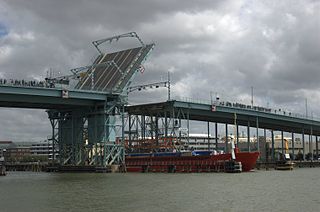
Götaälvbron is a bascule bridge in central Gothenburg, Sweden, carrying normal road vehicles and trams. The bridge was constructed in 1937 to 1939 and in 1966 it was widened. Constructed of steel beam, the bridge has a total length of 927 m (3,041 ft) and width of 20 m (66 ft). The mid span has a free height of 19.5 m (64 ft).
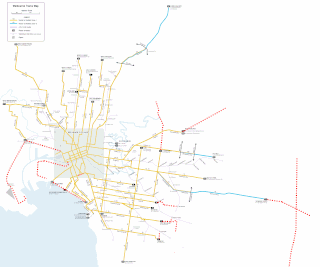
Numerous proposals have been made for improvements to the Melbourne tram network, the largest such network in the world. Nearly all of these have been for track extensions of existing lines to connect with nearby railway station or to service new areas and suburbs.
The first high-speed railway in Denmark is currently under construction and expected to open in 2019. Further high-speed lines are currently under planning.

Bristol Arena was a planned 12,000-capacity indoor arena, next to Bristol Temple Meads railway station in Bristol, England. It was expected to be completed in 2020. The site, which has become known as 'Arena Island', is to the south and across the River Avon from the station, and lies within Bristol Temple Quarter Enterprise Zone. The funding package for the arena scheme was approved by Bristol City Council in February 2014. The winning design, by Populous, was revealed in March 2015.



